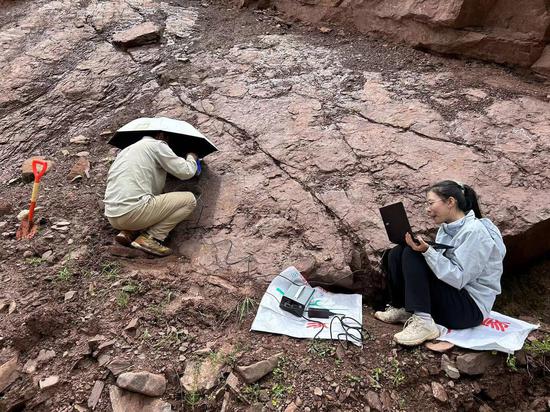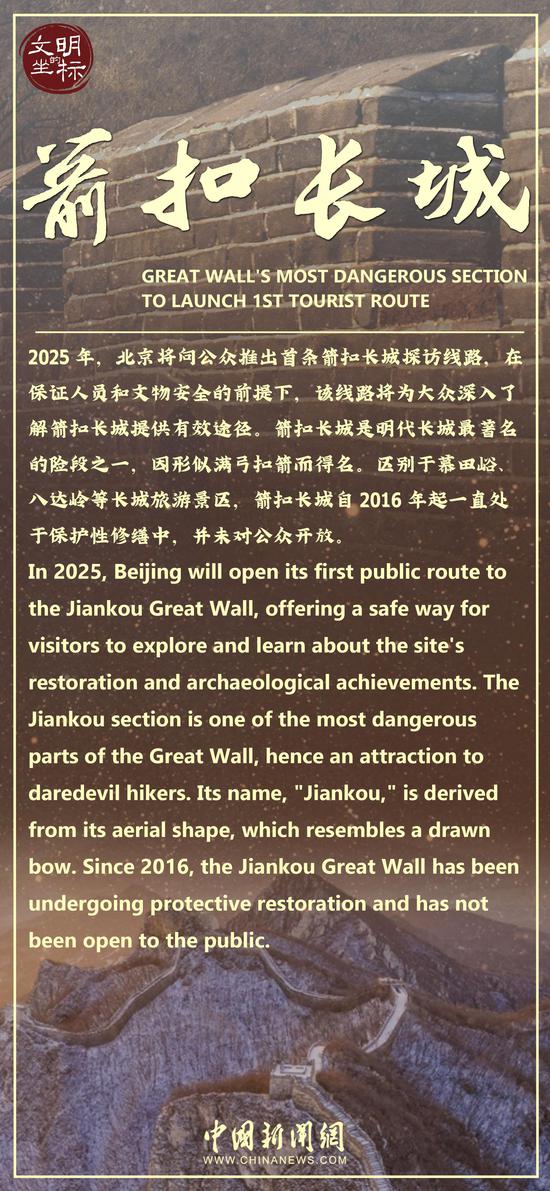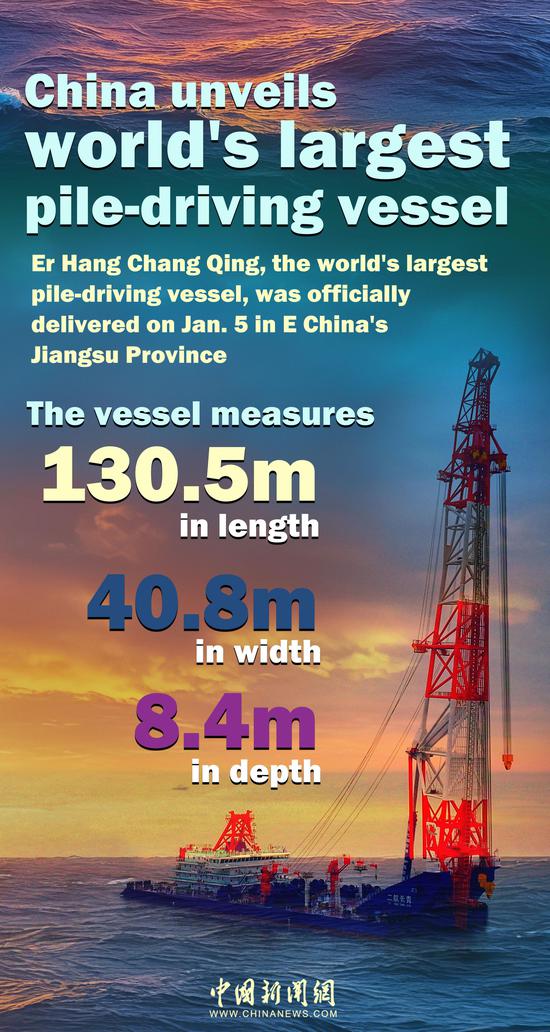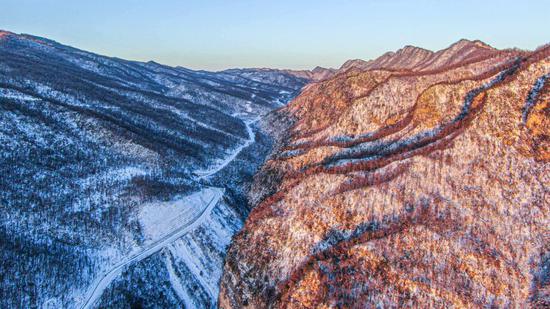
Scientists recently discovered the world's smallest known sauropod dinosaur footprints in eastern Xizang autonomous region. (Photo provided to chinadaily.com.cn)
Scientists have discovered the world's smallest known footprints of the sauropod dinosaur species in the eastern Xizang autonomous region, dating back approximately 170 million years to the Jurassic period, researchers announced Friday.
The footprints, found in a village in Chamdo city, range from 8.8 to 15.5 centimeters in length and are believed to have been left by at least six dinosaurs, identified as belonging to the Parabrontopodus track group, said Xing Lida, an associate professor at the China University of Geosciences in Beijing.
"These tiny sauropod footprints are quite rare," Xing said. "South Korea has a record of 12.2 centimeters, and Inner Mongolia in China has recorded footprints ranging from 11.5 to 13 centimeters. However, both were from the Cretaceous period, tens of millions of years after the Jurassic period."
The findings, published in the journal Historical Biology in late December, suggest the existence of small sauropod dinosaurs in the region. The team estimates the body length of the dinosaurs that left the tracks to be between 2 and 3 meters.
Xing explained that sauropod dinosaurs, which could grow to lengths of 20 to 30 meters, started life as hatchlings less than half a meter long. This significant size difference led to variations in behavior and diet between juveniles and adults, often resulting in age-based segregation within sauropod groups.
In addition to the small footprints, researchers also discovered three large theropod dinosaur footprints measuring about 42 centimeters each. These prints, classified as the ichnogenus Eubrontes, suggest the presence of medium-sized carnivorous dinosaurs, potentially reaching lengths of 6 meters, he said.
The discoveries add to the understanding of the region's ancient environment.
The Qinghai-Tibet Plateau, the world's highest and youngest plateau, reflects the complex evolutionary history of the Tethys Ocean, an ancient body of water. During the Early Jurassic period, the area was transitioning from marine sedimentation to inland basins, said Chen Xinyu, a senior engineer with the China Geological Survey.
Xing said, "This new fossil evidence strengthens the hypothesis that eastern parts of southwestern China were once part of the ancient Tethys Ocean."
He added that the region holds significant potential for further dinosaur research, with implications for both science and education.
"These discoveries indicate there is still much to learn about dinosaurs in Xizang, and the findings underscore the importance of continued exploration," he said.


















































 京公网安备 11010202009201号
京公网安备 11010202009201号